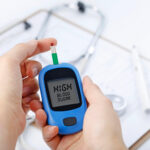
In this article
Heart disease is often perceived as a predominantly male issue. However, it is the leading cause of death for both women and men in the United States. Recognizing the unique symptoms and risk factors of heart disease in women, along with adopting a heart-healthy lifestyle, can significantly reduce the risk and improve overall health.
Symptoms of Heart Disease in Women
The most common heart attack symptom for both women and men is some type of chest pain, pressure, or discomfort that lasts more than a few minutes or comes and goes. However, women may experience less noticeable symptoms or none at all.
Women often describe heart attack pain as pressure or tightness rather than severe pain. Additionally, women are more likely to have symptoms unrelated to chest pain, such as:
- Neck, jaw, shoulder, upper back, or abdominal discomfort
- Shortness of breath
- Pain in one or both arms
- Nausea or vomiting
- Sweating
- Lightheadedness or dizziness
- Unusual fatigue
- Heartburn (indigestion)
These symptoms can be subtle and are sometimes mistaken for less severe health issues. Women tend to have blockages in both the main arteries and smaller arteries that supply blood to the heart, a condition known as coronary microvascular disease.
Women are also more likely to experience heart attack symptoms while at rest or even asleep. Emotional stress can play a significant role in triggering these symptoms.
When to Seek Medical Help
If you suspect you are experiencing a heart attack, seek emergency medical help immediately. Do not drive yourself to the hospital unless you have no other options.
Risk Factors for Heart Disease in Women
Traditional risk factors for coronary artery disease, such as high cholesterol, high blood pressure, and obesity, affect both men and women. However, certain risk factors are more significant for women:
- Diabetes: Women with diabetes are at a higher risk of developing heart disease than men with diabetes. Diabetes can also mask heart attack symptoms.
- Emotional Stress and Depression: These conditions affect women’s hearts more than men’s, potentially making it harder to maintain a healthy lifestyle.
- Smoking: This is a greater risk factor for heart disease in women.
- Inactivity: Lack of physical activity is a major risk factor.
- Menopause: Low estrogen levels after menopause increase the risk of heart disease in smaller blood vessels.
- Pregnancy Complications: High blood pressure or diabetes during pregnancy can increase the long-term risk of these conditions and heart disease.
- Family History: A family history of early heart disease is a more significant risk factor for women.
- Inflammatory Diseases: Conditions such as rheumatoid arthritis and lupus can increase the risk of heart disease in both sexes.
Preventive Lifestyle and Home Remedies
Adopting a heart-healthy lifestyle can significantly reduce the risk of heart disease. Here are some strategies:
- Quit Smoking: Avoid smoking and exposure to secondhand smoke.
- Eat a Healthy Diet: Focus on whole grains, fruits, vegetables, low-fat or fat-free dairy products, and lean meats. Avoid saturated fats, trans fats, added sugars, and high salt intake.
- Exercise Regularly: Aim for at least 30 minutes of moderate exercise, like brisk walking, most days of the week. Even short sessions of activity can be beneficial.
- Manage Stress: Practice stress-reducing techniques such as exercise, mindfulness, and joining support groups.
- Limit Alcohol: If you choose to drink, do so in moderation (up to one drink a day for women).
- Follow Treatment Plans: Take prescribed medications, such as blood pressure medications, blood thinners, and aspirin, as directed.
- Manage Health Conditions: Keep conditions like high blood pressure, high cholesterol, and diabetes under control.
Exercise and Heart Health
Regular physical activity is essential for heart health. Aim for at least 30 minutes of moderate exercise most days of the week. If 30 minutes is too much, start with shorter sessions and gradually increase. Strength training exercises two or more days a week are also beneficial.
Interval training, which alternates short bursts of intense activity with lighter activity, can help maintain a healthy weight, improve blood pressure, and boost heart health. Incorporate exercise into daily routines by taking the stairs, walking or biking to work, or marching in place while watching TV.
Heart Disease Treatment in Women
Heart disease treatments for women and men are generally similar, including medications, angioplasty and stenting, or coronary bypass surgery. However, there are some differences:
- Women are less likely to be treated with aspirin and statins to prevent future heart attacks, despite similar benefits in both genders.
- Women are less likely to undergo coronary bypass surgery, possibly due to less obstructive disease or smaller arteries with more small vessel disease.
- Cardiac rehabilitation can improve recovery and health, but women are less likely to be referred for this treatment.
Summary
Understanding the unique symptoms and risk factors of heart disease in women is crucial for prevention and early treatment. Adopting a heart-healthy lifestyle, staying informed, and seeking timely medical help can significantly reduce the risk and improve outcomes for women with heart disease
A Quick Review
Heart disease is the leading cause of death for women, often with different symptoms than men. Key symptoms include chest pain, neck or jaw discomfort, shortness of breath, and unusual fatigue. Risk factors include diabetes, stress, smoking, menopause, and a family history of heart disease. Adopting a heart-healthy lifestyle and seeking timely medical help are essential for prevention and treatment
FAQS
What are the unique symptoms of a heart attack in women?
Women often experience heart attack symptoms that are different from men. While chest pain is common, women may also experience symptoms like neck, jaw, shoulder, upper back or abdominal discomfort, shortness of breath, pain in one or both arms, nausea or vomiting, sweating, lightheadedness or dizziness, unusual fatigue, and heartburn (indigestion).
What are the major risk factors for heart disease in women?
The major risk factors for heart disease in women include diabetes, emotional stress and depression, smoking, physical inactivity, menopause, pregnancy complications, a family history of early heart disease, and inflammatory diseases such as rheumatoid arthritis and lupus.
Why is heart disease sometimes diagnosed later in women than in men?
Heart disease can be diagnosed later in women because their symptoms are often less noticeable and can be mistaken for other conditions. Additionally, women may experience heart attack symptoms while at rest or asleep, making it harder to recognize the signs. Women are also more likely to have nonobstructive coronary artery disease, where there are no severe blockages in the arteries, complicating diagnosis.











